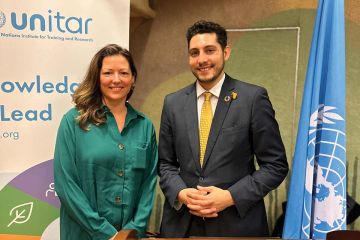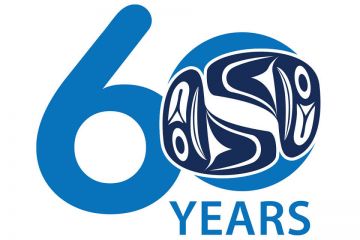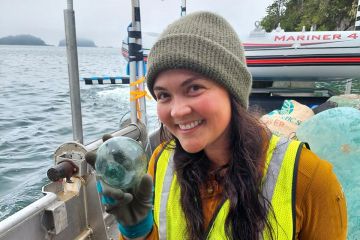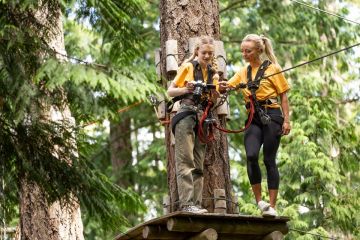Co-op student lands job with NASA
- Sam Van Schie
In Cambria Hanson's first-year mechanical engineering class, the professor drew an inverted triangle on the board to represent everything students would learn, and highlighted its tip to show what proportion they would actually use in the workplace. But while working on a project for NASA last year, Hanson used everything in the triangle and more.
Hanson spent her final co-op work term as a research and development intern at the California Institute of Technology's Jet Propulsion Laboratory (JPL)-the lab where NASA develops their Mars rovers. She tested a rock-sampling component called CHIMRA (Collection and Handling for In-situ Martian Rock Analysis), which will be one of many new parts on the next rover to be shot up to the red planet in the fall of 2009.
"This one is far better than all the other rovers combined-it's the size of a MINI Cooper," says Hanson, adding that NASA usually launches a rover or orbiter to Mars every 26 months, when it's closest to Earth. Hanson spent her days at JPL working in a vacuum chamber that mimics Mars' gravity condition, which is three-eighths that of Earth's. She was responsible for ensuring that the Martian rocks collected by CHIMRA could be successfully sorted and analyzed in that state.
"The experience was phenomenal. It was twice as interesting as all the other jobs I've had combined," says Hanson. "I woke up every morning totally stoked to go to work-sometimes even before my alarm."
But it took some luck and persistence for her to find this ideal job. September co-op terms had already started when she emailed her r&e#180;sum&e#180; to a generic NASA address and received an automatic away-from-desk response. The email included a number to call for immediate assistance, so she dialed it and convinced the woman on the other end to pass her r&e#180;sum&e#180; on to the division supervisors. By the next day Hanson had set up a phone interview, and by the end of the week she was on her way south to replace somebody who had just broken his ankle.
Hanson's supervisor, Kim Aaron, often uses co-op placements as a way to test would-be employees. "Hiring co-op students puts us in a much better position to assess potential permanent employees' skills, compared to the regular hiring system. It gives us a real reference point to decide if we want to make them a permanent offer when they graduate," says Aaron.
As a co-op student, Hanson proved herself as an employee worth keeping. In September, she returned to JPL as associate mechanical engineer in the Planetary Sampling, Acquisition and Handling Group-working on designing and testing ground support equipment needed for assembly and testing of flight hardware for CHIMRA.
In this story
People: Cambria Hanson




